28 results
Common Core RI.4.1 laboratories
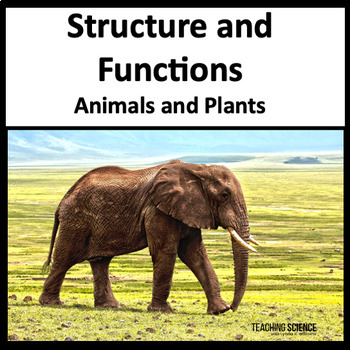
Structure & Functions 4th Grade Science Plant Animal Adaptations & Animal Senses
Do you need to teach Animal and Plant adaptations, structure, and function? Students will learn that animal and plant adaptations include internal and external structures and that each structure serves a specific function. They will also learn about animal adaptations and plant adaptations, including behavioral adaptations in animals. Students will be able to make a simple model (graphic organizer for this Included) to describe how animals receive information through their senses, process the in
Subjects:
Grades:
4th - 5th
Types:
NGSS:
4-LS1-1
, 4-LS1-2
Also included in: 4th Grade Science NGSS PLUS Reading Informational Text Passages CCSS
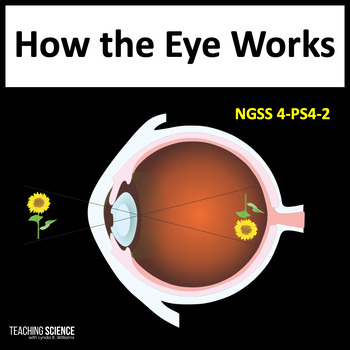
Light Reflection and Refraction Light Energy and How The Eye Works 4-PS4-2.
Students will make a model that light reflecting from objects and entering the eye causes objects to be seen. They will learn about reflection and refraction. This resource addresses the NGSS standards for 4th grade 4-PS4-2, 4-LS1-1, and 4-LS1-2. This resource also addresses NGSS Waves and Their Applications and From Molecules to Organisms: Structures and Processes. This resource includes:nonfiction articlesresponse pageshands-on inquiry-based lessonsInteractive Notebook FlapsTeachers Love This
Subjects:
Grades:
4th
NGSS:
4-PS4-2
Also included in: 4th Grade Science NGSS PLUS Reading Informational Text Passages CCSS
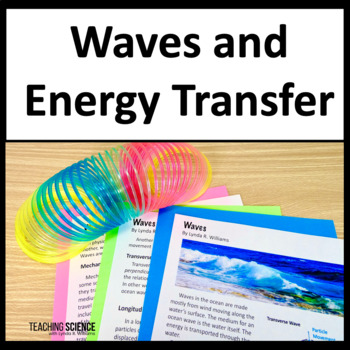
Waves Activity & Patterns and Energy Transfer Waves Lab NGSS 4-PS4-1 and 4-PS3-2
Do you need to teach about waves? Students will explore waves and concepts relating to waves hands-on and also through reading informational text about waves. Students will learn about amplitude and wavelength and that waves transfer energy rather than matter.This resource includes:inquiry-based lessonsfour pages of informational textresponse pagesinteractive notebook flapsa review game with cardssix hands-on activitieslabs on waves answer keys Camille ⭐️ ⭐️ ⭐️ ⭐️ ⭐️ Extremely Satisfied This is
Grades:
4th
NGSS:
4-PS4-1
, 4-PS3-2
Also included in: 4th Grade Science NGSS PLUS Reading Informational Text Passages CCSS
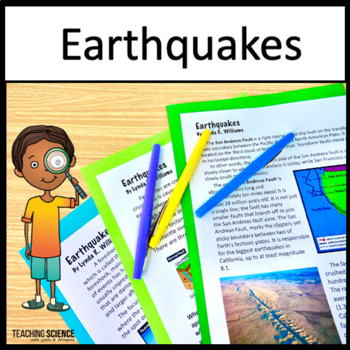
Earthquake Activities Analyzing Maps and Designing Solutions to Reduce Impact
Do you want to teach upper elementary students about earthquakes?Students will analyze maps to learn about Earth's features. Students will compare multiple solutions to reduce the impacts of natural Earth processes on humans. Students will love learning about Earthquakes and the science behind them. Includes over 90 pages and slides!This Earthquake resource includes:hands-on activitieslab pagesmap workinteractive notebook flapsfive pages of informational text passagescomprehension pagesa slide s
Grades:
3rd - 5th
NGSS:
4-ESS1-1
, 4-ESS2-2
, 4-ESS3-2
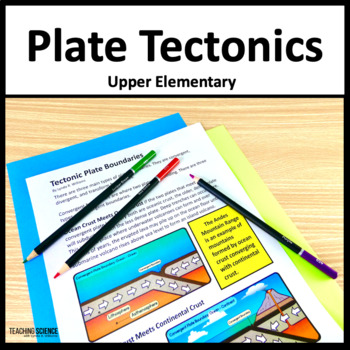
Plate Tectonics - Changes to the Earth's Surface - Earth's Features
Plate tectonic activities are engaging for students! This HUGE integrated unit combines close reading of nonfiction passages on plate tectonics and changes to Earth's surface with a hands-on lab. This unit also includes plate tectonics worksheets. Landscapes on Earth have changed over time! We know this because of the study of plate tectonics. This resource is full of interesting activities! Perfect for Upper Elementary Students.This unit includes: a hands-on lab follow-up pages QR code Researc
Grades:
4th - 5th
NGSS:
4-ESS1-1

4th Grade Science NGSS PLUS Reading Informational Text Passages CCSS
This fourth-grade NGSS science bundle includes all of my resources for 4th-grade NGSS. It also includes fourth-grade resources for reading informational text. Teachers and school districts will love this Huge fourth-grade NGSS Bundle with a wide variety of labs, centers, nonfiction articles, and more. This Bundle Includes the following Science Units:Structure and FunctionSpeed, Energy, and Colliding ObjectsFossils UnitWaves UnitEnergy and ObjectsUsing Patterns to CommunicatePangeaFossil FuelsEar
Subjects:
Grades:
4th
Types:
NGSS:
3-PS2-1
, 3-ESS3-1
, 3-LS4-1
, 3-5-ETS1-3
, 3-ESS2-1
...
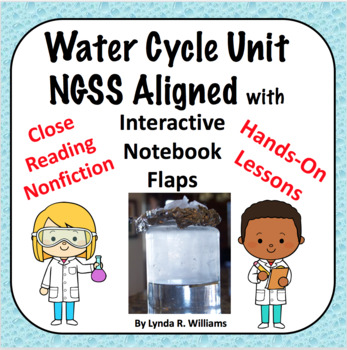
Water Cycle Bundle NGSS Aligned With Interactive Notebook Inserts
Water Cycle Unit: Students will learn about the water cycle, transpiration, evaporation, condensation and precipitation. with these 4 hands-on labs. In addition to the experiments, students will read a nonfiction passage, participate in CLOSE reading activities, complete interesting interactive notebook flaps, complete response pages, view a slide show and play learning games. The labs are hands-on and they use easy to find household materials. This water cycle unit is aligned with NGSSNGSS 4-
Subjects:
Grades:
4th - 8th
NGSS:
MS-ESS2-1
, MS-ESS2-4
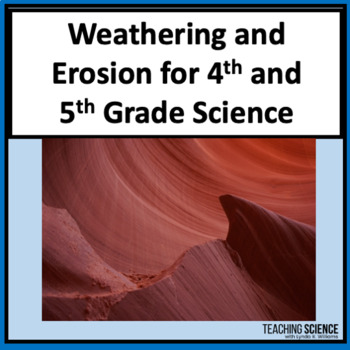
Weathering and Erosion Labs and Nonfiction Close Read NGSS 4-ESS2-1 and Utah 5th
Weathering and Erosion Lab: Students will learn about weathering and erosion and how Earth's surface has changed over time. Includes a reading passage and a hands-on lab on weathering. This resource includes:lab on weatheringInteractive Notebook flaps and foldsthree-page reading passageresponse pages comprehension questions with text-dependent questionsanswer keysAligned with NGSS for 4th gradeNGSS 4-ESS1-1. Identify evidence from patterns in rock formations and fossils in rock layers to support
Subjects:
Grades:
4th - 5th
NGSS:
4-ESS1-1
, 4-ESS2-1
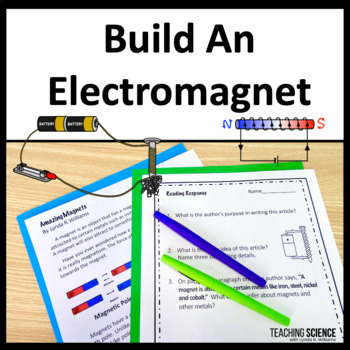
Make an Electromagnet STEM Challenge
Students will make an electromagnet using STEM engineering skills. They will design, test, and refine their electromagnet through investigation. Aligned with NGSS for third and fourth grade.This resource includes two lessons. One is a STEM Engineering lesson on making an electromagnet. The other is a reading informational text lesson that comes with a 3-page informational text article on magnets. This resource includes flaps and folds for interactive notebooks. This lesson is aligned with NGS
Subjects:
Grades:
3rd - 6th
NGSS:
4-PS3-4
, 3-PS2-3
, 3-PS2-4
Also included in: 4th Grade Science NGSS PLUS Reading Informational Text Passages CCSS
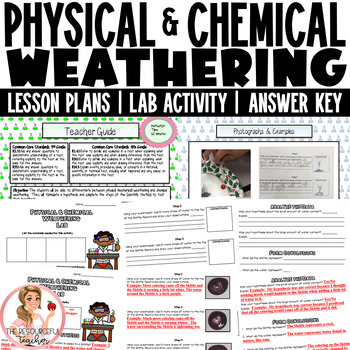
Physical and Chemical Weathering Demonstration and Science Experiment
This yummy lab experiment by The Resourceful Teacher has students demonstrate physical weathering (mechanical weathering) and chemical weathering by adding drops of water to Skittles candy! The students will use the Scientific Method to formulate a hypothesis, analyze results, and form conclusions.Lesson plans, photographs, lab packet, and answer key are all included. Common core objectives are also included and listed. Are you looking for more science experiments? Check my ★ SCIENCE UNITS BUNDL
Subjects:
Grades:
3rd - 5th
Types:
NGSS:
3-5-ETS1-3
, 3-5-ETS1-1
, 4-ESS2-1
Also included in: Science Activities Bundle

Earth Science For Fourth Grade - Earthquakes, Fossil Fuels, and Volcanoes
This resource includes all my Earth Science Activities for 4th Grade. Students will learn about earthquakes, volcanoes, weathering, and erosion. They will read informational text and do fun labs for earth science. Save 20% by purchasing this bundle.4-ESS1-1. Identify evidence from patterns in rock formations and fossils in rock layers to support an explanation for changes in a landscape over time. 4-ESS2-1. Make observations and/or measurements to provide evidence of the effects of weathering or
Subjects:
Grades:
4th - 5th
NGSS:
4-PS4-2
, 4-PS3-4
, 4-ESS1-1
, 3-5-ETS1-3
, 4-PS3-3
...

Christmas Science INDEPENDENT Science Experiment
Christmas Science Experiment - This product contains one simple science experiment that can be done independently by third, fourth and fifth graders. This can be done with second graders as long as they are able to read the materials.Materials Needed:- 4 small candy canes per student or group- 3 small, clear cups per student or group- water- vinegar- vegetable oil- liquids labels I’ve provided- observation/learning packetExplanation of Results:I’ve included a very child-friendly explanation of t
Grades:
3rd - 5th
Types:
Also included in: Thanksgiving Christmas Independent Science Experiments Bundle!
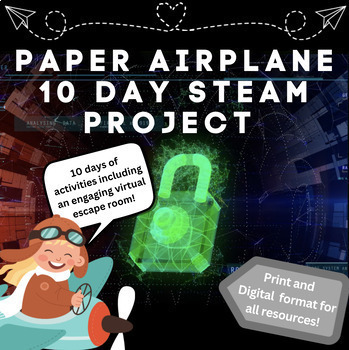
The Ultimate Paper Airplane STEAM Project + Escape Room: 10 Day Challenge
Every year since I started teaching, I've done a paper airplane contest. When I first started around 12 years ago, it was a quick contest that lasted just an afternoon. Gradually, as my experience as an educator grew, this project began to grow into what it is today... A 10 day cross-curricular mega project! I always say that student engagement is the key to learning, and I can guarantee that your students will be engaged during these activities! They will be measuring, graphing, reading, analyz
Grades:
3rd - 12th
Types:
NGSS:
MS-ETS1-2
, HS-ETS1-2
, 3-5-ETS1-3
, HS-ETS1-3
, MS-ETS1-4
...

What Do Plants Need to Grow?
What Do Plants Need to Grow? introduces students to the important role plants play in sustaining life as we know it. Plants are among the most important resources on Earth, providing us with food to eat and oxygen to breathe. In addition to adding beauty to our surrounding environment, plants also keep our soil healthy through decomposition, provide habitats for animals, and are the source of many materials we use every day—including wood, clothing, medicine, plastic, and more. In this unit, stu
Subjects:
Grades:
2nd - 4th
Types:
NGSS:
K-2-ETS1-1
, 4-LS1-1
, 3-LS4-1
, 2-LS2-1
, 3-LS3-1
...
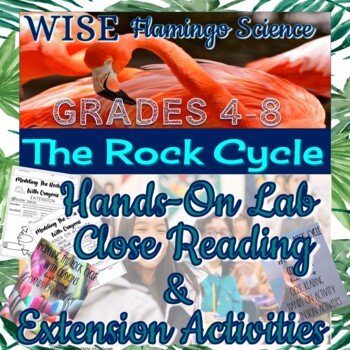
Modeling the Rock Cycle Activity Bundle
EARTH SCIENCE: These fun and engaging Rock Cycle &Three Types of Rocks Activities will have your students loving science! Everything you need to kick off your Earth Science Rock & Mineral Unit is included here, including a Hands-On Lab, Close Reading & Differentiated Assessment Extension Activities. This Upper Elementary & Middle School Science Resource Includes:-Non-fiction Active Close Reading Introducing the Rock Cycle & Types of Rocks (DIGITAL VERSION INCLUDED)-Hands-on
Subjects:
Grades:
4th - 9th
Types:
NGSS:
MS-ESS2-3
, MS-ESS2-2
, MS-ESS2-1
, 4-ESS2-1
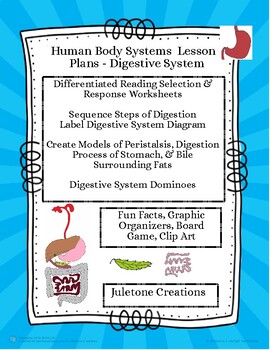
Distance Learning Human Body Digestive System
Explore organs of the Digestive System and Digestive Processes. Differentiated Reading Selection & Response Worksheets introduce topics and provide an opportunity for assessment. Hands on Activities include: Sequence Steps of Digestion, Label Digestive System Diagram, Create Models of Peristalsis, Model Digestion Process of Stomach, and Experiment with Bile Surrounding Fats. Learn about the digestive organs while playing the Digestive System Dominoes Game. Literally make your way through
Subjects:
Grades:
2nd - 5th
Types:
Also included in: Distance Learning Human Body Systems
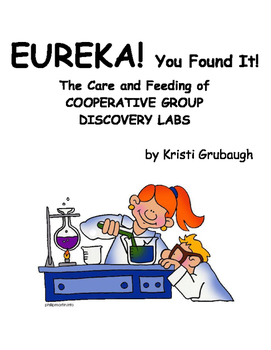
EUREKA You Found It The Care and Feeding of Cooperative Group Discovery Labs
EUREKA You Found It! The behind-the-sciences, how to do it, care and feeding of student-centered discovery labs. Learn how to set up, maintain and manage cooperative group hands-on labs in the elementary classroom from a teacher that used the system for 10 years in both self-contained and block classrooms.
Grades:
3rd - 5th
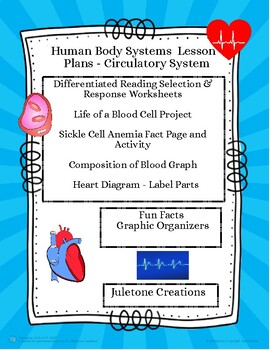
Distance Learning Human Body Circulatory System
Explore function and organs of the Circulatory System - Differentiated Reading Selection & Response Worksheets introduce topics and provide an opportunity for assessment. Hands on Activities include: Fun Facts, Diagram, Web of the 4 Chambers of the Heart and direction of blood flow, Sequence Cards review Steps of Blood Circulation, Sickle Cell Anemia Experiment, and Graphing Components of Blood.
Subjects:
Grades:
2nd - 5th
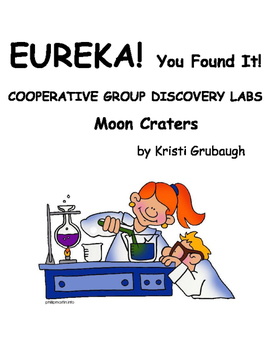
EUREKA You Found It Cooperative Group Discovery Lab Moon Craters
Moon Craters is a fun activity for students to experience the formation of craters by different "meteorites." Simple supplies of flour, a box lid, random objects and a ruler become a lesson in observing and measurement.
Subjects:
Grades:
3rd - 5th
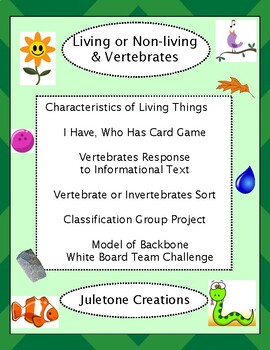
Distance Learning Living/Nonliving & Vertebrates Characteristics
Introduce a science unit about vertebrate animals with these fun activities. Identify living things and describe their characteristics. Ask students to sort animal pictures (from magazines, online pictures, or other resources) and explain their method of classification. Play I Have, Who Has or Team Challenge to review characteristics of vertebrates and related vocabulary. Informational Text passage about Vertebrates is followed up with comprehension assessment worksheets. Sort about 40 anima
Subjects:
Grades:
2nd - 5th
Types:

Bread Digestion Lab
This lab allows students to get a hands on, visual experience of the digestive system in action. Students will read a detailed summary about the process of the digestive system. Then, they will follow explicit procedures which will have them "digest" a piece of bread through each part of the digestive process. After each part there is a quick question to make sure students are identifying the type of digestion they are simulating. This package includes:Digestive System SummaryProcedures for Brea
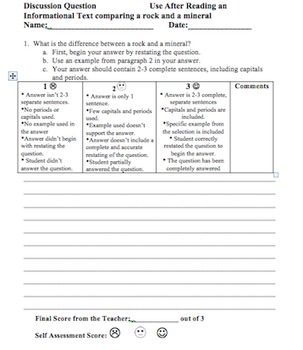
Discussion Question-Compare a rock and a mineral
This is a written assessment, designed to be used after reading an informational text on rocks and minerals. The discussion question asks the students to write about the differences between a rock and a mineral. The lesson includes a rubric, a place for students to do their writing, and a self assessment.
Grades:
4th - 6th
Types:
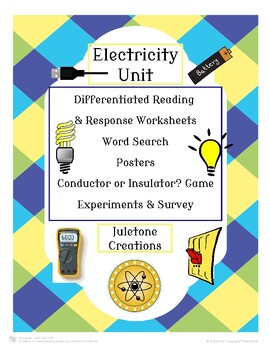
Distance Learning Electricity Unit
Electricity Unit introduces basic concepts about current and static electricity. Differentiated reading & response worksheets provide foundation for games and experimental activities. Posters and a Word Search can be used to review vocabulary words and concepts. The board game, Conductor or Insulator?, can be paired with an actual hands on experience with testing conductors and insulators. The six experiments are set up as stations but can be used as single activities.
Grades:
3rd - 6th
Types:
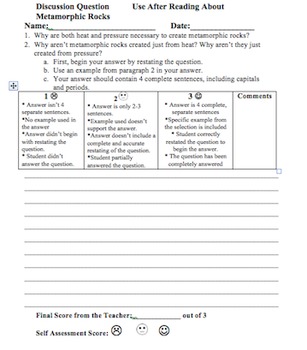
Discussion Question Use after reading about Metamorphic Rocks
This discussion question asks the students: 1. Why are both heat and pressure necessary to create metamorphic rocks?
2. Why aren’t metamorphic rocks created just from heat? Why aren’t they just created from pressure?
The activity includes a rubric, a place for students to do their writing, and a self assessment.
Grades:
4th - 6th
Types:
Showing 1-24 of 28 results

